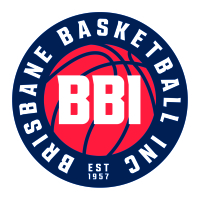BLUE CARD

Blue Card Application - Volunteers
Blue Card Application - Paid Employees
Blue Card Application - Exemption
Blue Card Transfer - Volunteer to Paid Employee
Blue Card Authroisation to Confirm
Blue Card Obligation's & Penalties
This assesses a person’s eligibility to hold a blue card or exemption card based on their known past police and disciplinary information. This process also disqualifies certain people upfront and prevents people from working with children whose past behaviour indicates they are not eligible to enter regulated child-related employment.
Ongoing monitoring
The Commission monitors the police information of all card holders and applicants. If the information changes, the Commission can take steps to immediately protect children from harm. The Commission also monitors service providers and card holders to ensure they are meeting their blue card system obligations and providing safe environments for children.
Reducing future risk
Organisations who provide child-related services must have policies and procedures in place to identify and minimise the risk of harm to children. These risk management strategies are monitored by the Commission.
Purpose
The purpose of the blue card system is to contribute to the creation of safe and supportive environments for children and young people when receiving services and participating in activities which are essential to their development and wellbeing, such as child care, education, sport, and cultural activities.
While many people are familiar with the blue card itself, it is important to be aware that the initial blue card screening conducted by the Commission is only the first component of a three part system which considers past, present, and future risks:
- Blue card screening to determine a person's eligibility to work with children and young people based on their known past behaviour
- Ongoing monitoring of all blue card holders and applicants to enable the Commission to take action to protect children and young people if the person is charged with a concerning offence, and
- Mitigating future risk through the requirement for organisations providing child related services to develop and implement child and youth risk management strategies.
What is the blue card check?
The blue card check is a national criminal history check that assesses:
- any charge or conviction for an offence (even if no conviction was recorded)
- child protection prohibition orders (whether a person is a respondent or subject to an application)
- disqualification orders
- if a person is subject to reporting obligations under the Child Protection (Offender Reporting) Act 2004 or Dangerous Prisoners (Sexual Offenders) Act 2003
- disciplinary information held by certain professional organisations including teachers, child care licensees, foster carers, nurses, midwives and certain health practitioners, and
- information that the Police Commissioner may provide in relation to police investigations into allegations of serious child-related sexual offences, even if no charges were laid.
A person whose application is approved is issued with a positive notice letter and a blue card.
If a person’s application is refused, they are issued with a negative notice which prohibits them from carrying on a business or providing child-related activities in the categories regulated by the Commission’s Act.
If you are a registered teacher or police officer in Queensland, you do not apply for a blue card and should instead apply for an exemption card when providing regulated services to children which are outside of your professional duties.
Please click here for more information about exemption cards.
What is a risk management strategy?
Safe environments don’t just happen, they require ongoing planning, commitment and maintenance. Organisations falling within the scope of the blue card system are required to implement child and youth risk management strategies which address eight minimum requirements. The purpose of these strategies is to ensure that organisations have appropriate policies and procedures in place to identify and minimise the risk of harm to child and young people in regulated service environments.
Please click here for more information about child and youth risk management strategies and some tools to help you to create a child-safe environment.









